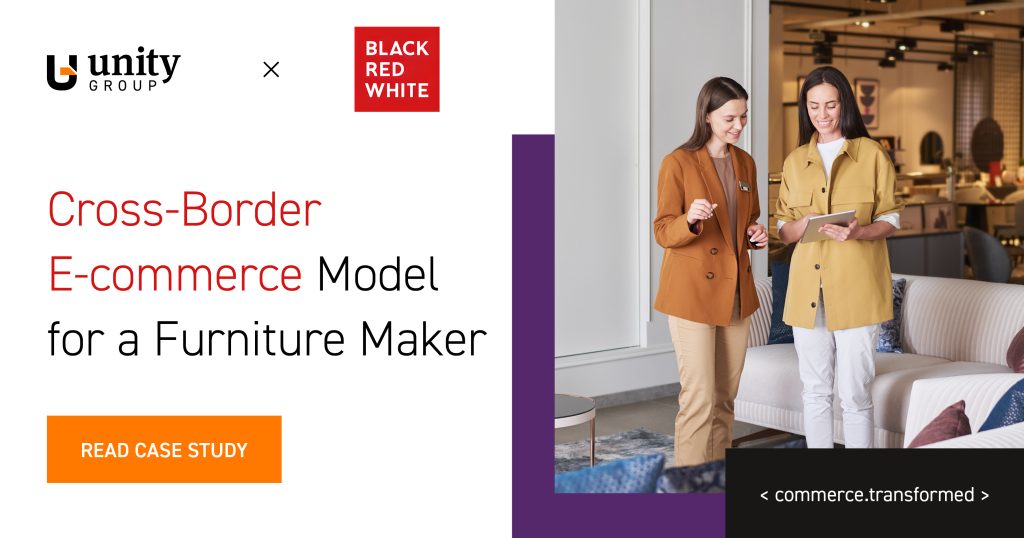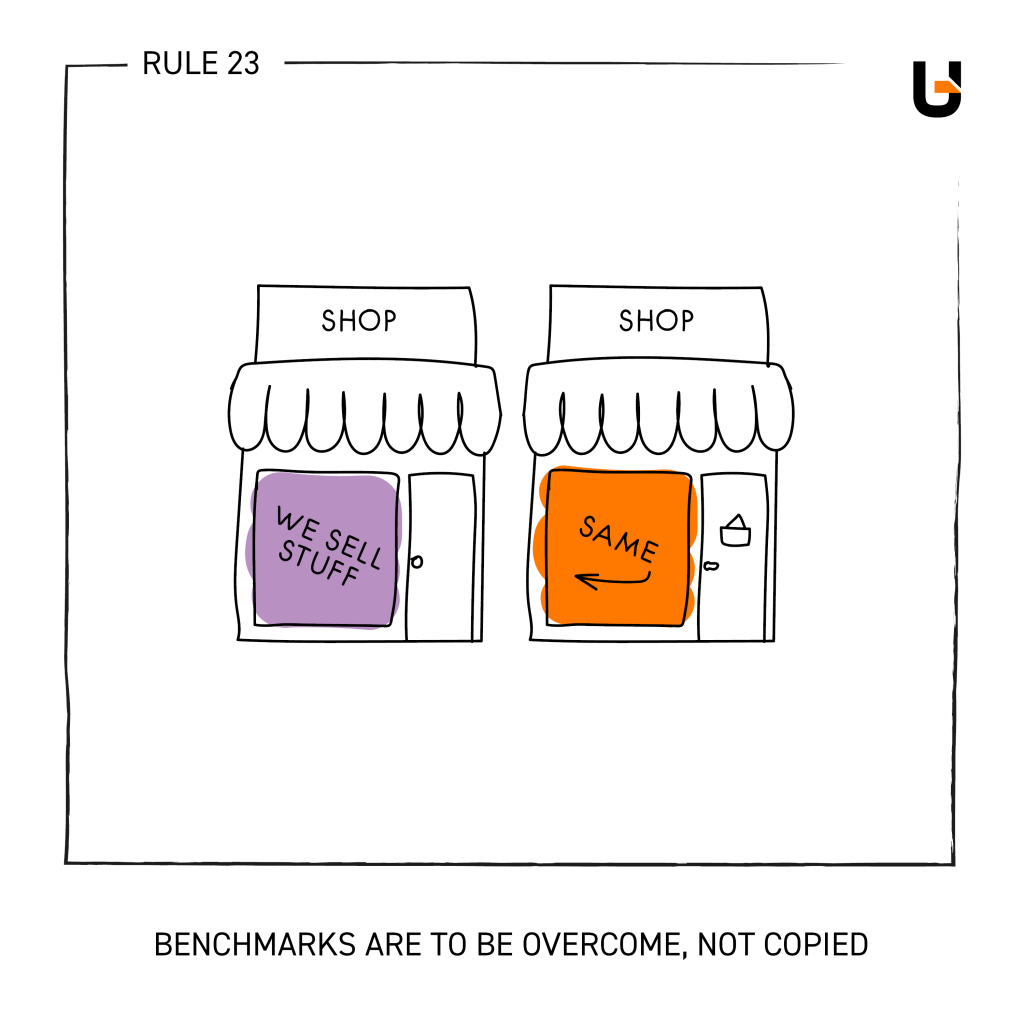The D2C Challenge / Creating a Furniture E-Commerce Brand
Furniture and e-commerce might feel like two contradictory terms – it still feels weird trying to add a wardrobe to a basket 😉 – but online shopping is becoming an increasingly vital part of the furniture industry.
And that means we can esssentially split the sector into two groups: those that enable direct online shopping, and those that only rely on third parties to generate revenue.
As a whole, the home furnishing market is one open for digital development. While some companies are paving the way with their own brands, not all furniture retailers are making the leap online. However, as you’ve probably guessed already – we strongly recommend enabling online purchases as a means to enable growth.
More specifically, we also recommend it as a means to interact directly with your target audience and help your brand standout in the furniture industry.
Types of D2C for the Furniture Industry
The direct-to-consumer model is not a one size fits all strategy. There’s more than one way to build a connection with the public consumer and furniture retailers may choose one or more options.
- You can establish your own dedicated retail premises, which also act as showrooms, and invest in heavily promoting your brand to build up loyalty. This can potentially offer the best customer experience, but it’s also the most expensive.
- You can sell online and offer home delivery options. This is more cost effective, but comes with the caveat that not everyone will buy furniture without being able to inspect the items first. Likewise, while it streamlines deliveries, you also need to cater to supporting returns as well.
- You can also sell on marketplaces. Here, the marketplace takes care of some of the functionalities, although you still need to offer deliveries and returns through the platform. It’s the most cost efficient, but it does put you in direct competition with other furniture businesses.

Direct-to-Consumer from the Customer’s Perspective
So what do online shoppers look for? And what additional features or support do they need online compared to their in-store shopping experience? There are a few key areas that potential furniture e-commerce businesses need to be aware of:
- Product information and presentation. The biggest challenge is to replicate the showroom experience as much as possible. High quality photos and descriptions – including delivery options and costs – are a must.
- Promotions and offers. For companies that have previously relied on third-party showrooms or vendors, they might not have the most experience here. While it might not be one of the biggest furniture e-commerce trends, it can still be said that timely promotions can draw in additional attention – and revenue. A more refined and detailed pricing policy will surely be needed when going D2C.
- Customer experience. Digital UX is not something traditional furniture retailers have had to think about. When taking online shopping into their own hands, however, this is essential. Great UX needs to consider desktops, mobile devices and the needs of shoppers at various points in the purchasing path.

Online Sales in the Furniture Industry
Let’s be clear: this is a major trend, not a minor convenience. Estimates suggest that global online sales in the home furnishing market, specifically, will generate over 40 billion USD by 2030. Consumers are not only increasingly used to digital shopping in the post-Covid landscape, but are increasingly frugal and will invest more time into finding the right brands and furniture items to buy.
This is not to say that they always opt for the cheapest, but simply that they know what they want – and are willing to look for it.
The average order value of home products has also increased from 2020, at around 421 USD in Q2 of 2023, and online sales continue to occupy a growing space in the furniture industry.
Furniture E-Commerce in the D2C Model
The biggest benefit is obvious: the Direct to Consumer model enables furniture companies to hold on to a bigger portion of the revenue and profits.
But the direct to consumer model is also vital for appealing to younger generations. These customers have grown up with the likes of IKEA: for them, the furniture business should be online, as driving out to a showroom just to browse is not something they wish to do so frequently.
Likewise – as we’ll discuss later – sites like Pinterest only help further move the home furnishing space online. They create a buzz around specific furniture items – and brands – which digital-savvy furniture companies can build on.
Examples of D2C Furniture Businesses
Aside from IKEA, there are a number of furniture brands rapidly developing an online shopping experience for their customers.
In the UK and US, we have the likes of Allform, Floyd and Burrow, all of which sell their furniture online, direct to the public. Even companies like John Lewis, which did not start out in the furniture industry at all, now offer a wide range of own-brand furniture items on their e-commerce stores.
Meanwhile, companies like Wiemann, Rauch and Dedon are proving very popular in the DACH region and beyond, both creating key niches in the market and also expanding their cross-border operations.
Here in Poland, we also have local furniture sector leaders like Black Red White and Meble Forte who, in addition to traditional commerce revenue from store rooms, also support customers buying furniture online, greatly expanding their reach.
The Big Reasons to Go D2C
We’ve covered the benefits of D2C before, but the key advantages always bear repeating. From our perspective, here are the biggest reasons furniture producers should consider future growth via direct e-commerce furniture sales.
Cross-Border Enablement
Everyone needs furniture. As such, it’s an industry prime for expansion into new territories. While the traditional system would require investment in a local presence and working with local showrooms, the direct-to-consumer approach can prove a more efficient way to achieve the same result.
When it comes to establishing a cross-border presence, marketplaces represent a good way to test the waters and introduce both your brand and your products. In time – or for those with the resources to jump in – a dedicated furniture e-commerce site can also cement your position.

In either case, the biggest investment is arguably not your online sales channels, but rather ensuring you have the logistics capabilities to deliver to your new markets.
Maximized Margins
In traditional showroom models, where products are displayed and sold through third party vendors, this middle party often gets a cut of the final profits. In the D2C model, you are effectively cutting these sellers out of the process.
While this does mean you have to invest in your own sales, you’re also not losing money on another company’s commission or cut. Needless to say, it’s also a very scalable approach for expanding businesses 😉
Brand Awareness
Having a known brand is a powerful thing. Users will still recognize it on marketplaces, in show rooms or anywhere they see it. However, the real benefit is when brand awareness starts to generate customer loyalty – when potential buyers think only of your brand rather than searching the market.
And for this to happen, you ideally need to establish your own online presence, to give users this chance to engage with you as directly as possible.

What’s more, having an online store supports further growth strategies – especially those connected to content commerce. After all, happy customers love to share photos of their home furniture products and this in turn supports your brand awareness through user generated content.
Faster Time-to-Market
When relying on third party companies, you can’t always just announce new products. These middle salespeople need to think about available floorspace on showrooms, determine if it’s a product they want to sell or otherwise balance the needs of their own business versus that of their stock providers.
When it’s D2C, however, then it’s entirely up to you. Want to launch new products on your own furniture e-commerce, or even on a marketplace? You can do it. As we said before, the only hurdle is ensuring you’re prepared to handle the logistics.
Greater Incentives
On a marketplace, it’s hard to directly target customers, aside from occasional discounts and offers. In the D2C model, however, you can consider loyalty programs and more advanced means to directly keep customers focused on your furniture brand.

Reduced Reliance on Third Parties
In traditional models, the furniture industry relies heavily on third party showrooms and dealers to sell their products. This gives you less control, as you often have to accept their terms, while their own internal downturns or shifts further impact your business, too. By adopting your own presence, you can gain direct control over your e-commerce revenue without having to negotiate the middleman’s cut.
The Side Benefits of a Furniture E-commerce
Even a side from the biggest benefits, there are a number of smaller reasons to implement online furniture sales that you might not have considered.
Access to Data
When selling furniture on the showroom floor, it’s hard for even leading retailers to understand which products gain the most interest. Sure, we know which ones sell but what about the ones that gain attention, but don’t necessarily convince shoppers just yet In a data-drive era, information like that is important.

It’s the same for marketplaces, where most online sales for furniture retailers typically happen. Since they are third party platforms, you don’t get access to anything other than, one again, sales figures.
But the buyer journey is so much more than this, and customer data is an invaluable asset. This is especially true for the furniture market, where each sale is of a larger value than most typical B2C e-commerce brands.
Easier Expansion
Want to enter a new market? If you rely on a physical store to make sales, we hope you’re ready for a huge investment. If you’re online however, it’s not as difficult to invest in the global market. Yes, you still need logistics and warehouses, but you need these anyway.
This also applies to local markets. Online shopping gives you a presence across the country and not just in towns large enough to sustain brick and mortar premises.
Always Open
Showrooms have to close at some point. Shopping online, on the other hand, is a 24/7 business. This enables your furniture e-commerce or marketplace greater reach, as you can be discovered by people casually browsing, or those who are curious to search, but not yet dedicated enough to drive to a showroom.
Supporting E-Commerce Furniture Sales
Online furniture sales don’t just happen no their own. When going direct to consumer, you naturally need to invest in various forms of support.
Some of the biggest challenges – aside from the fact that it’s a significant investment – for both promoting and selling home furnishings online include:
- Offering a personalized shopping experience. It might not be as good as the in store experience, but it should be able to outcompete marketplaces.
- Answering customer needs online. Does it fit? Does it clash? These are all thoughts that people have when furniture shopping. And this is no different when buying furniture online.
- Building awareness. People will not find you unless you make some noise 😉
D2C Omnichannel
When handling sales completely in-house, it’s also important to embrace the wider omnichannel strategy. We won’t go into the wider topic of omnichannel here – as the state of omnichannel is another topic onto itself – but it’s important to note that today’s numerous channels are highly embraced by shoppers, so you need to start doing the same.

To start, we highly recommend these as the most immediate channels for the furniture industry:
- Website: We hope this one is obvious by now 🙂
- Social Media: a key driver for traffic to your website, for spreading awareness and for supporting user generated content ala content commerce.
- Marketplaces: Again, another obvious one, but marketplaces serve as important channels, since they already have large audiences or followings.
- Apps: Perhaps the least urgent in any omnichannel development, apps can support augmented reality or other tools to help customers consider their home furniture and whether or not your products would fit.
- Physical Stores: Let’s not forget that channels are not only digital. We said earlier that investing in your own brick and mortar stores would be very expensive, but what about pop-up stores? As a form of experiential retail, this can greatly help gain immediate awareness in key locations.

Alongside this, we would also advise you to look into multiexperience and total experience strategies, but in short: make sure every channel is optimized for its strengths, and ensure your employees also have the right tools to support buyers. Customer support is just as important as customer experience, especially in the furniture sector, where customers buy infrequently, but typically spend a lot when they do.

Getting Started with D2C Online Furniture Sales
Now that we’ve explored the theoretical and the ideal, let’s focus on the practical. What are the first steps in going D2C? There’s a good chance that you already have some of the building blocks necessary for a successful furniture e-commerce website.
The first clear goal is to enable customers to purchase online. This can be primarily achieved through a dedicated e-commerce store, marketplaces, or a combination of the two. The latter, of course, is much easier to set-up, while the former is much more viable for furniture brands that have made a name for themselves.
- Utilizing Existing Logistics. Furniture brands are unsurprisingly familiar with shipping and handling their products, so the leap from sending to showrooms to sending directly to customers is not as big a leap as it might seem. Steps here could include upgrading the delivery fleet, refining packaging for individual deliveries and even setting up a tracking system.
- Leverage Existing Assets. Likewise, most companies already have comprehensive data for their products, including descriptions, measurements, fabric details and high-quality photographs, to be used by third party showrooms in their own materials. This content can also be repurposed for your own marketplace entries and website. If you’re not already using them, tools like Product Information Management systems can effectively enable this while keeping additional work to a minimum.
- Start with Marketplaces. If you haven’t established a strong brand presence on the market yet, marketplaces are the best way to expose customers to your products. While there are general marketplaces, such as Amazon, platforms like WayFair in the UK, Home24 in DACH or meble.pl in Poland. Since you’ve already prepared the necessary assets in the previous step, it’s just a case of getting established on your target platforms.
- Learn and Iterate. After a while, you’ll be able to gain key insights into customer behavior, as well as early feedback. Here, you can also learn which products are the most popular, what the desirable price points are and how to stand out from the competition.
- Build Your Own E-Commerce. Once your comfortable with online sales, and the backend logistics that go with it, and you’ve developed popularity in your core markets, it’s time to build your own platform. Modern e-commerce platforms make this easy, but it’s important to have the knowledge from the previous steps to build the online shopping experience your specific customers want.
- Lean Heavily into Digital Marketing and Branding. Now that you have your own online platform, separate from other furniture retailers, you need to invest in your own awareness building. Targeted ads, SEO and various forms of marketing become crucial. At this stage, you also have access to more direct information, such as customers browsing history on your site, to further enhance your retargeting.
Of course, your business is unique and we wouldn’t want to suggest a “one size fits all” approach. Larger companies that have built a reliable brand on the market, but have not yet embraced D2C or online furniture shopping, may consider jumping straight into their own e-commerce platform if they can justify the upfront resources.
However, for most, we do believe it’s better to invest in marketplaces and other platforms to at least test the waters, before building dedicated e-commerce platforms.








